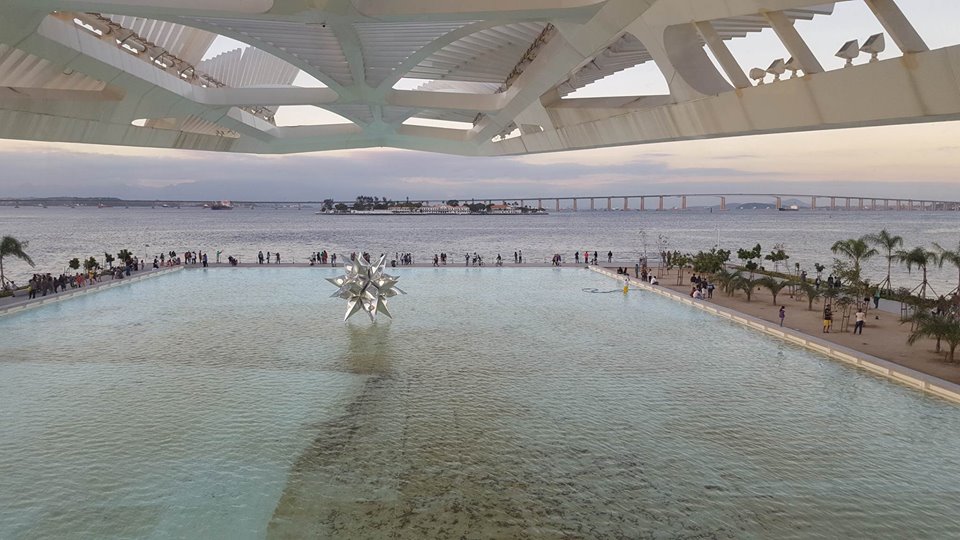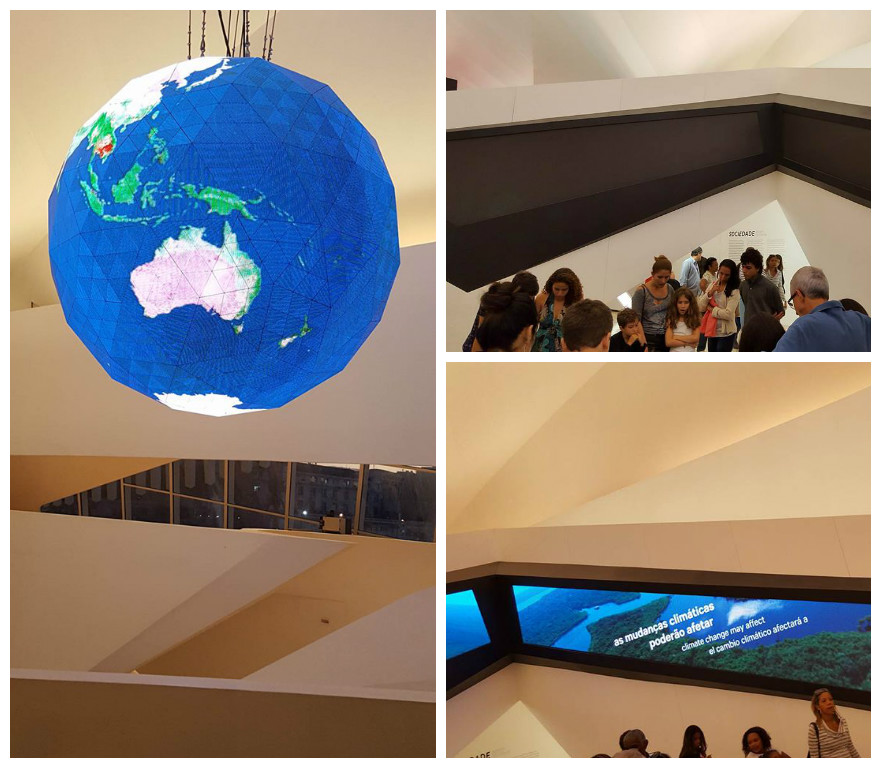In 1997, the national environmental education policy (Politica Nacional de Educacao Ambiental, Lei 9.795, de 27 de abril de 1999) was instituted, and, through it, was established mandatory environmental education at all levels of formal education in Brazil. However, we are still facing a lot of problems here in Brazil to educate and inform the new generations about what is going on with our planet, and the actions we need to take.
Due to the great strength in relation to environmental analysis and lack of training for teachers, there is the need to create ways to include environmental education in the course schedule in an interesting way. In December of 2015, the government opened the Museum of Tomorrow (Museu do Amanha) in Rio de Janeiro, a place that seeks to warn about the dangers of climate change, environmental degradation, and social collapse. Given the importance of environmental education, the museum plays a crucial role in communicating with the new generations, being an ideal place for this process to happen.
Everyday the museum opens to the public, and, along with regular visitors, some schools bring their students to an interactive "class" that allow them to understand the importance of all forms of life. The tour starts with the main exhibition: The cosmos. Inside a dome, the visitor is immersed in a projection in 360 degrees where a 10 minute video explains about the history of the universe and its creation, answering the question " How did we get here?"


After that, the visitors go to the second phase, Earth. This phase answers the question " Who are we? ". This phase is divided into three modules - Matter, Life and Thought, talking about life and the interaction of life in all its forms. They also introduce some concepts as society and other aspects human nature, such as religion and culture.



The third phase, the Anthropocene, explores the question: " Where are we? ". They show data about our environmental situation and the reasons for that. It is really impressive how they connect our situation with our actions. In my opinion, this is the most impacting phase because it shows what WE are doing to our planet. They also have some games for you to calculate the amount of energy you use, and the amount of garbage you produce. It is made really simple to understand the influence we have on our planet, even in everyday actions!





And after about 40 min of visit, the visitors go to the last phase :Tomorrows. This phase tries to find answers to the question " Where are we going? " Showing perspectives for our future and how we can change it. At the end of this phase you will probably find yourself wondering about everything you know!
After the visit, I was really impressed. Even though I knew about most of the information presented, I was truly impacted by the message they passed. I left the museum more concerned about our future, and truly convinced that WE CAN CHANGE OUR SITUATION.
After 50 min walking throughout the exhibition, I was more sure than ever that I wanted to have a career in the environmental area. I cannot imagine the impact that this museum has on all the children visiting.
Tomorrow is today!
5 Comments
Thanks guys! It is an amazing bulding, and also you mentioned also a really green one.
They also have a lab inside of the museum in which that have some really interesting actv to the visitors.
Posted 25-06-2016 10:36
Marcus, while reading your report, I felt a strong desire to visit that place. Environmental education being mandatory in Brazil is amazing itself, but having those kinds of museums is tremendous. Students will learn and feel a lot whenever they visit the museum. Thanks for sharing such information and have a great day!
Posted 15-06-2016 21:22
Woouuah. The building looks sooo cool and futuristic. and the size,, wow. I would definitely want to visit the place if I were a local. I hope the interest to nature of the locals is or would be tantamount to the great size of the monumental(I would say) building. And sure if i happen to visit Brazil, for the olympics maybe(?), I'll check out how it is. Thanks for writing!
Posted 13-06-2016 12:00
It's amazing how the prompting questions the museum gives make us think so much about our impact on the environment but at the same time who we are as inhabitants of Mother Nature. Through your article, I felt like I was in the place itself, and I hope to visit the place whenever I go to Brazil. Education is what the future is built of and through creativity used as shown above, I can't wait to see how the next generation will view nature and its resources. Thank you for the article, I really enjoyed it!
Posted 11-06-2016 19:18
WOW! It looks awesome. I have further tried to read about this unique museum and known that this museum meets sustainable architecture standards, has a full program of educational outreach, and even recycles water from the bay in its air conditioning systems.The essential concept of the museum is that 'tomorrow is not ready ,Tomorrow will be a construction. We will participate in this construction as people - Brazilians, citizens and members of the human species.” Very well thought and planned museum conveying a strong message of environment conservation. Thanks a lot for sharing.
Posted 11-06-2016 18:07